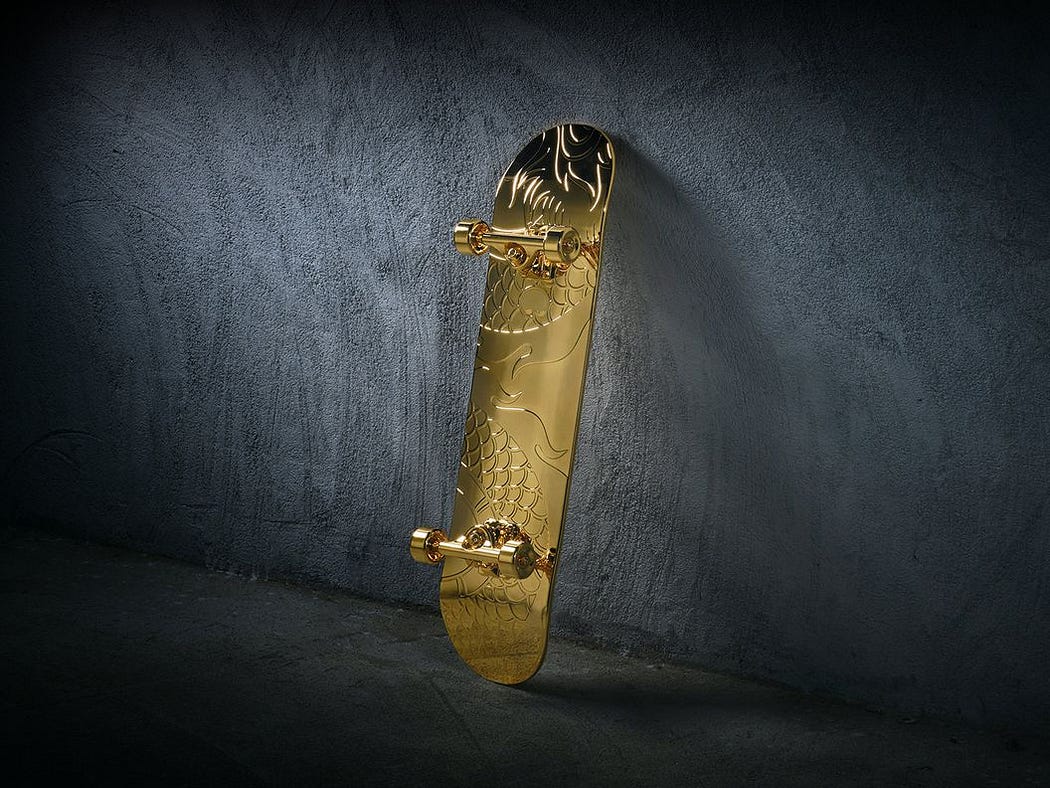
With NFTs, the concept of phygital presents endless opportunities to the space. By definition, phygital bridges the gap between the physical world and the digital one.
It focuses on giving users a hybrid experience in terms of user interface and experience. Currently, this idea mainly exists for the fashion and luxury goods industry as it is easier for companies to link their digital offerings to that physically. Furthermore, Morgan Stanley predicts that the metaverse could bring the fashion and luxury goods industry an additional 50 billion dollars in sales by 2030.
Having physical goods linked to the digital world extends the utility of either physical or digital ownership. This is a great way for the community to feel that they are able to represent the project on both channels. In addition, it can also help to securitize the underlying physical goods by having ownership registered on the blockchain. A couple of NFT projects are at the forefront of venturing into the phygital realms with their unique proposition.
You can also read : An Ultimate Guide To NFT Gaming Development
NFT projects venturing into phygital
Azuki
Azuki launched a Proof of Skate (POS) initiative with the bidding of their golden skateboards for each of the top 8 bidders. They aim to bridge the gap between web2 and web 3 by introducing Physical Backed Tokens (PBT):
“The PBT standard is a solution which enables decentralized authentication and tracking of the full ownership lineage of physical items, all completely-chain and without a centralized server. This introduces trustless authentication. No entity has singular rights to authenticate or verify ownership of items — everyone is free to authenticate, verify, and build experiences on top of this technology.”
This was a huge success as the highest bid was 309 ETH and the total revenue of $2.5m. Each golden skateboard comes with a unique emblem with significance from Azuki lore, and also holders get to be enshrined in the Ruins world drop as part of Azuki mythology. The token pushes the boundary between physical ownership and trustless authentication. It is now easier for anyone to view the entire ownership of the skateboard since it is able to keep track of who has owned the item in the past, which is useful for the fine art world of establishing its provenance.
RTFKT
CloneX SZN 1 launched a Forging Mechanic for their existing NFT holders to redeem exclusive physical items from their NFTs collectibles such as fashion items (sneakers, hats, jackets, etc). What differentiates how RTFKT launch its phygital experience is the introduction of Near Field Communication:
“All forgeable items with the exception of Socks and Caps are equipped with NFC tags, allowing owners to link their physical to their NFT. This allows for new possibilities and unlocks in the future such as new items to mint or token-gated physical events.”
The launch of the Forging event is a huge success and the project was able to generate a revenue of $11.34m, with the top three fashion items being T-shirts (36%), Shoes (23.6%), and caps (12.9%). RTFKT launched its physical fashion items successfully because of Nike’s manufacturing expertise; this is an example of how existing fashion brands can tap into Web3 audiences through NFTs.
You can also read: Top 5 Fintech sources — Enhance your industry knowledge
Cult & Rain
Cult & Rain was created as a phygital Web3 fashion brand co-founded by fashion creative director George Yang. This project aims to create both physical and digital wearables such as luxury sneakers and varsity jackets paired with NFTs. With connections to the factory that produces for both LVMH and Kering, the corresponding physical product will be produced in Italy after the claiming of the NFTs is done.
Having a direct-to-consumer model avoids overproduction, which is a main issue for the traditional fashion industry. The digital asset sold as an NFT allows holders to experience the utility of its matching physical luxury product ensuring that they are of good quality.
How to have a successful Phygital plan?
With various projects having their phygital experience included for their community, how can projects measure success to ensure that phygital fit into the long-term of the brand instead of it being a once-off marketing tactic? Personally, I feel that there are a couple of key considerations:
- An innovative bridge between physical and digital — It is not enough to just allow holders to claim merchandise physically just by holding the NFT. People are expecting more, especially with the foundation of blockchain in NFTs, and projects are pushed to think of ways to stand out. A great example is Azuki, where they introduced the PBT concept to the idea of being able to pass on ownership easily without someone having to verify the physical item.
- Physical to resonate with the brand — Projects also need to bear in mind that the physical item needs to resonate with the brand and its vision. RTFKT does it well because they are acquired by Nike, which is known for its merchandise like shoes, shirts, and caps thus reinforcing to their holders that they are able to deliver on that end.
- Physical to be part of the long-term roadmap — Using phygital as a marketing tactic works great as it is the buzzword in the NFT space. However, for a project to truly embrace the concept, it needs to be part of the roadmap where holders can get consistent utility from holding the physical despite already having the digital aspect.
It is great that projects are slowly starting to steer away from the typical merchandise launch and embracing the phygital concept. More web2 people will be willing to move towards web3 if they are able to see the value and tangible perks of owning the NFTs. How can projects incorporate phygital into their business model and continue bridging the gap between web2 and web3? A lot of trial and error is probably needed since we are early in this space.
Credit : Medium




